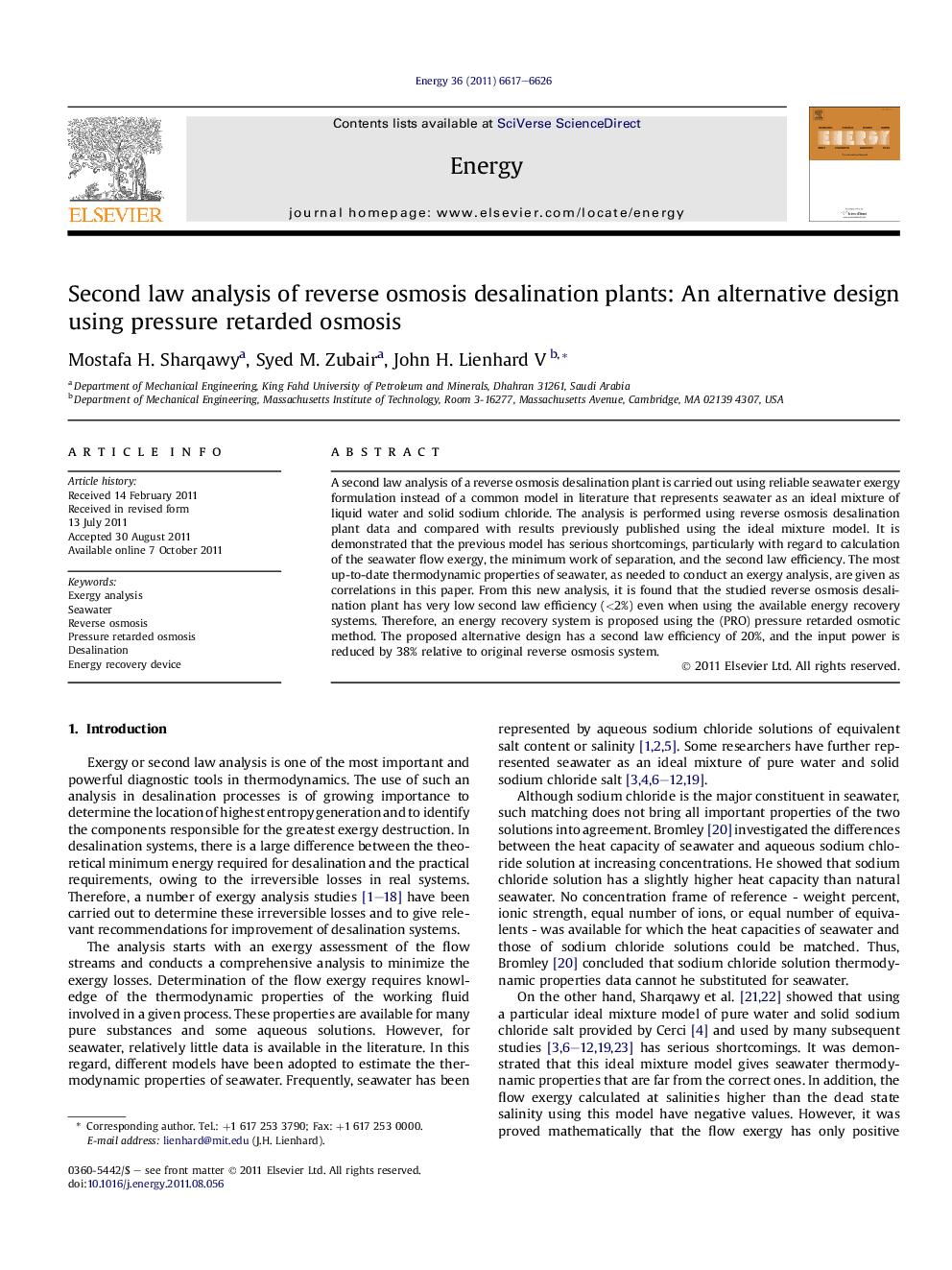| Article ID | Journal | Published Year | Pages | File Type |
|---|---|---|---|---|
| 1734401 | Energy | 2011 | 10 Pages |
A second law analysis of a reverse osmosis desalination plant is carried out using reliable seawater exergy formulation instead of a common model in literature that represents seawater as an ideal mixture of liquid water and solid sodium chloride. The analysis is performed using reverse osmosis desalination plant data and compared with results previously published using the ideal mixture model. It is demonstrated that the previous model has serious shortcomings, particularly with regard to calculation of the seawater flow exergy, the minimum work of separation, and the second law efficiency. The most up-to-date thermodynamic properties of seawater, as needed to conduct an exergy analysis, are given as correlations in this paper. From this new analysis, it is found that the studied reverse osmosis desalination plant has very low second law efficiency (<2%) even when using the available energy recovery systems. Therefore, an energy recovery system is proposed using the (PRO) pressure retarded osmotic method. The proposed alternative design has a second law efficiency of 20%, and the input power is reduced by 38% relative to original reverse osmosis system.
► A previously proposed model for the calculation of seawater flow exergy gives incorrect values. ► Reverse osmosis desalination plants have very low second law efficiency (<2%) even when using the available energy recovery systems. ► A PRO energy recovery device increases the RO plant’s second law efficiency to 20% and reduces the input power.
